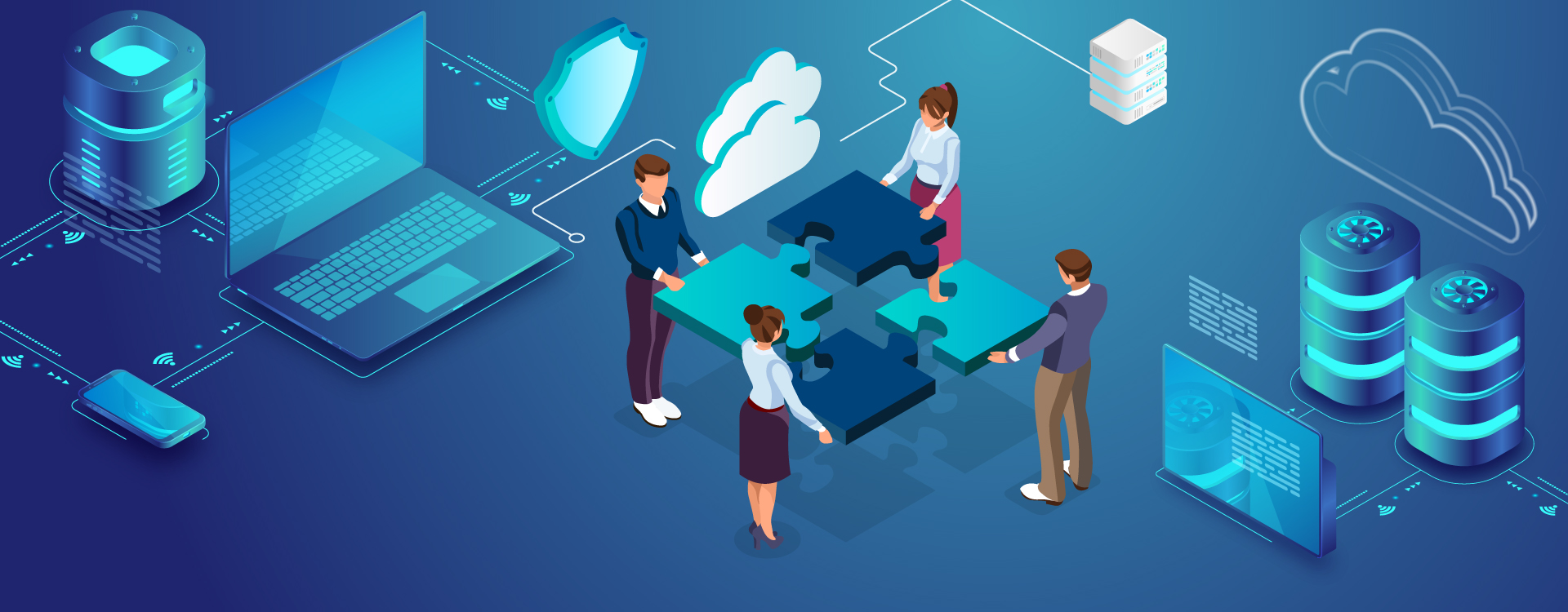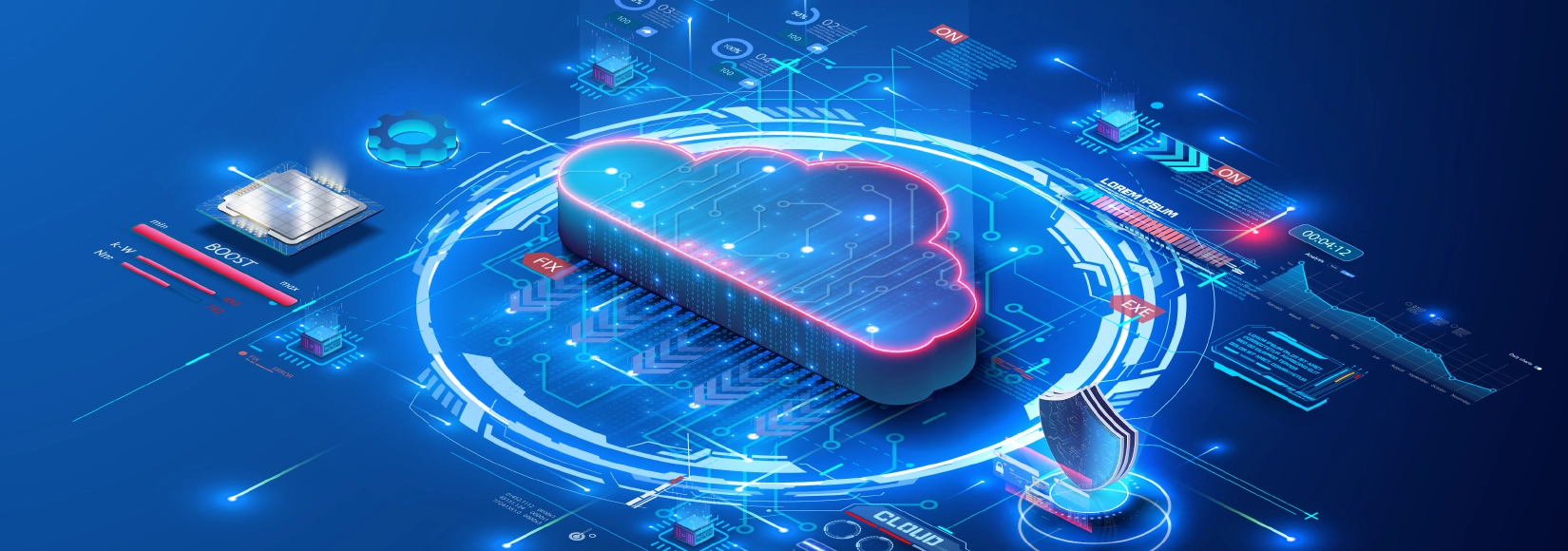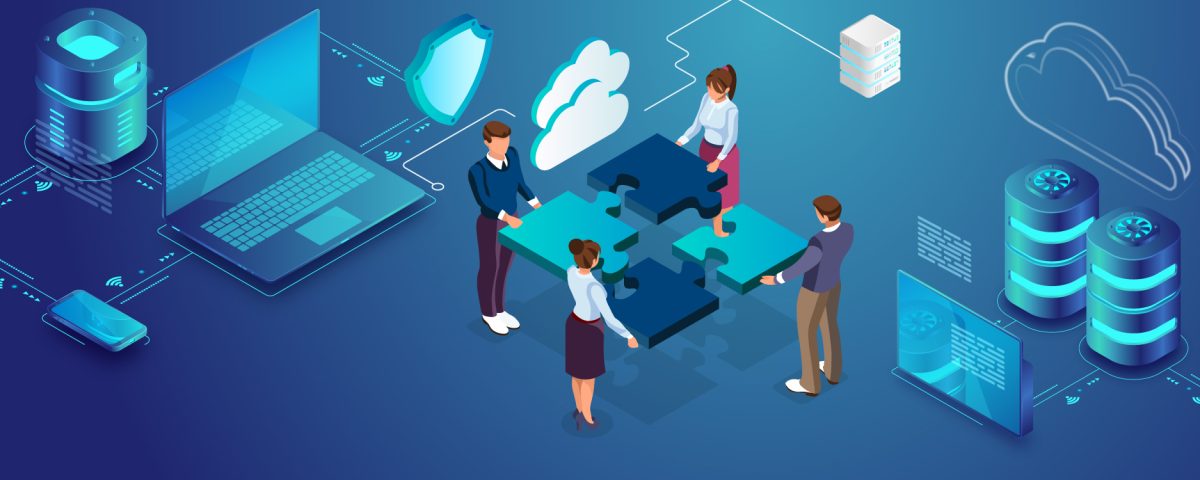Explore the future of IT outsourcing in 2025–26. Discover key...

Boost Sales with Digital Marketing Services for Traditional Brands
May 30, 2025
The Future of IT Outsourcing: Trends & Best Practices (2025–26)
May 30, 2025
How to Build a Secure IT Infrastructure in 2025 | Best Practices & Tips
In today’s digital-first world, a strong and secure IT infrastructure is the backbone of any successful organization. Whether you’re running a global enterprise or setting up an IT infrastructure for a new office, your systems must be resilient, scalable, and protected against modern threats to survive and thrive.
This guide explains how to build IT infrastructure securely in 2025, covering core components, IT security best practices, and smart strategies to protect your data, systems, and people.
What Is IT Infrastructure?
IT infrastructure refers to the combined set of hardware, software, networks, and services required to operate and manage your IT environment. This includes:
- Servers and data centers
- Network infrastructure (routers, switches, firewalls)
- Cloud platforms
- Operating systems and software
- Security tools and protocols
- User access systems
A secure IT infrastructure ensures that all of these components are protected from cyberattacks, data loss, and system failures—forming a strong foundation for modern business IT infrastructure needs.
Why Secure IT Infrastructure Matters in 2025
- Cyber threats are more advanced than ever, from ransomware to phishing-as-a-service.
- Remote and hybrid workforces demand more secure remote access.
- Regulatory compliance like GDPR, HIPAA, and ISO 27001 is now mandatory for many businesses.
- Downtime and breaches can lead to massive financial and reputational damage.
Core Components of a Secure IT Infrastructure
1. Physical Security
Protect data centers and physical assets through:
- Surveillance systems
- Access control systems
- Fire suppression and power backups
2. Network Security
Your secure network infrastructure should include:
- Firewalls, VPNs, and next-gen intrusion prevention systems
- Network segmentation to isolate critical assets
- Traffic monitoring with SIEM solutions
3. Endpoint Protection
Devices like laptops, phones, and desktops must be secure:
- Install anti-virus and EDR tools
- Enforce device encryption and patch management
- Use mobile device management (MDM)
4. Identity and Access Management (IAM)
Control who accesses what:
- Multi-factor authentication (MFA)
- Role-based access control (RBAC)
- Single sign-on (SSO) integrations
5. Cloud Infrastructure Security
As more companies adopt cloud, protect:
- AWS, Azure, or GCP configurations using cloud security posture management (CSPM)
- Storage buckets and databases from unauthorized access
- Identity federation and secure APIs
6. Data Backup and Recovery
Ensure business continuity with:
- Regular automated backups
- Encrypted offsite/cloud backups
- Tested disaster recovery plans

Best Practices for Building a Secure IT Infrastructure
1. Conduct a Security Risk Assessment
Before building your IT setup for a new office or upgrading legacy systems:
- Identify vulnerabilities
- Map critical assets
- Prioritize based on risk level
2. Adopt a Zero Trust Architecture
“Never trust, always verify” is the foundation:
- Validate every user and device trying to connect
- Monitor user behavior and device health
- Minimize access to the least privilege required
3. Implement Patch Management
Unpatched software = open door for hackers:
- Automate OS and software updates
- Use centralized patch management tools
- Maintain a patch testing protocol
4. Secure Your Remote Workforce
With hybrid work becoming the norm:
- Enforce VPNs and endpoint protection
- Use secure collaboration platforms
- Provide regular cybersecurity training
5. Monitor & Respond in Real-Time
Proactive defense is vital:
- Use a SIEM system to detect anomalies
- Set up alert systems for critical incidents
- Establish an incident response team and playbook
Compliance and Governance: Make Security Official
Modern IT infrastructure security solutions must meet compliance and governance standards:
- ISO/IEC 27001 – Information Security Management
- NIST Cybersecurity Framework – US federal guideline
- GDPR / HIPAA / PCI-DSS – Regulatory compliance based on industry
Documenting and automating compliance checks is a must in modern IT infrastructure.
Emerging Tech to Enhance Infrastructure Security in 2025
- AI-Powered Threat Detection
Predict and prevent attacks using behavioral analysis.
- Blockchain for Data Integrity
Secure records and transactions in tamper-proof ledgers.
- SASE (Secure Access Service Edge)
Merge networking and security for cloud-first businesses.
- Extended Detection and Response (XDR)
Unified threat detection across endpoints, servers, and the cloud.
Common Mistakes to Avoid
- Relying solely on firewalls or antivirus
- Granting excessive user access privileges
- Delaying software updates and patching
- Ignoring cloud configuration audits
- Underestimating insider threats
Avoiding these pitfalls is crucial when setting up IT infrastructure that is both scalable and secure.
Benefits of Building a Secure IT Infrastructure
When executed correctly, a secure IT infrastructure delivers:
- Prevents costly data breaches
- Ensures business continuity
- Builds customer trust and brand reputation
- Supports compliance and regulatory mandates
- Enables scalable and secure growth
Conclusion
Security can’t be an afterthought—it must be built into the core of your IT infrastructure. In 2025 and beyond, the businesses that invest in secure, compliant, and scalable systems will be the ones that lead in innovation and resilience.
Whether you’re setting up infrastructure from scratch or optimizing your existing one, ensure security, visibility, and agility at every step.
Recent Post
How to Build a Secure IT Infrastructure in 2025 | Best Practices & Tips
Learn how to build a secure IT infrastructure to protect...
Boost Sales with Digital Marketing Services for Traditional Brands
Discover how digital marketing services help traditional brands boost visibility,...








